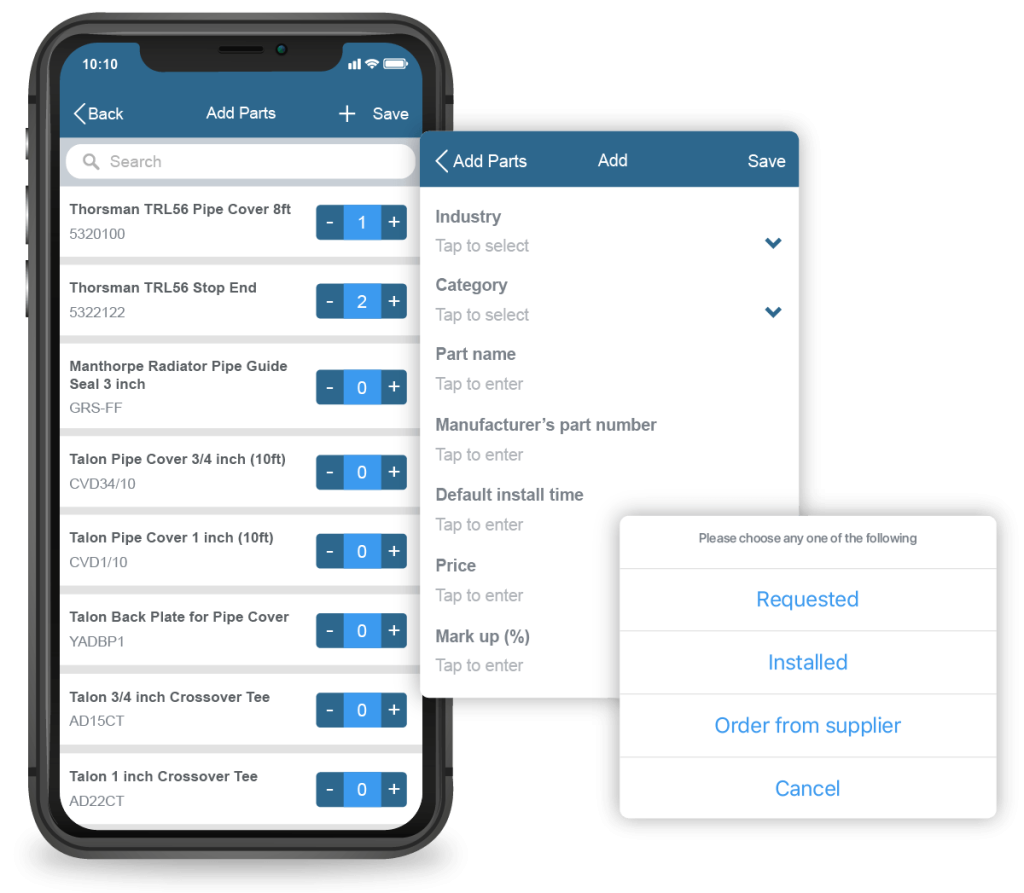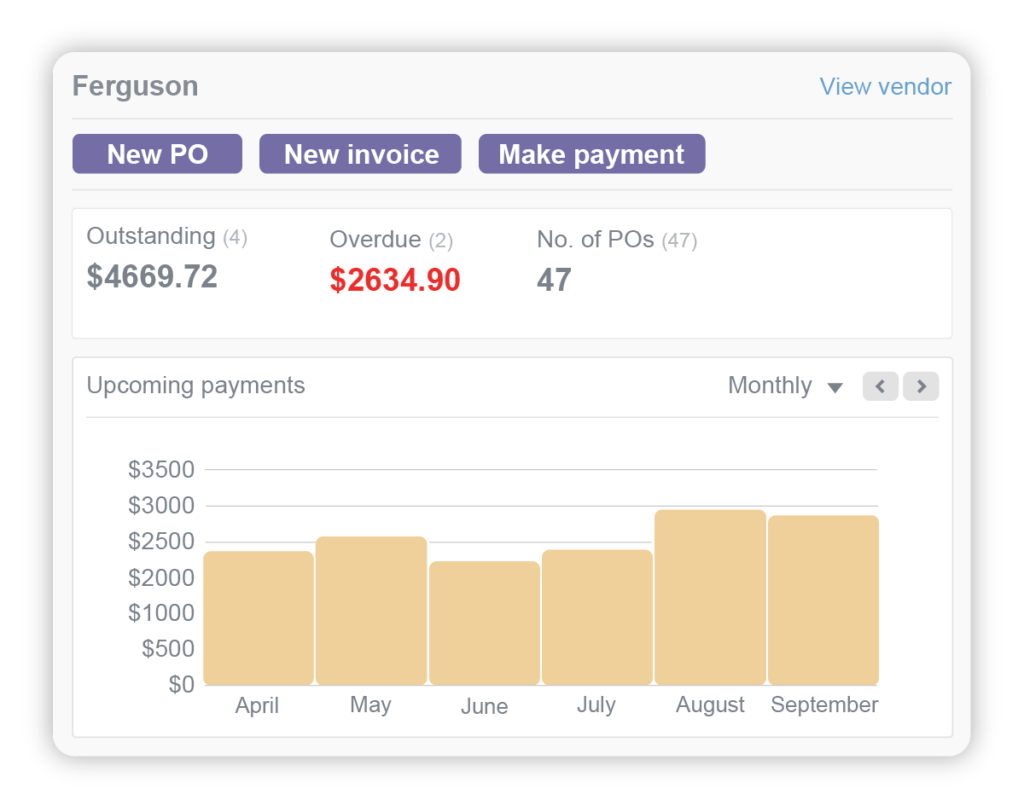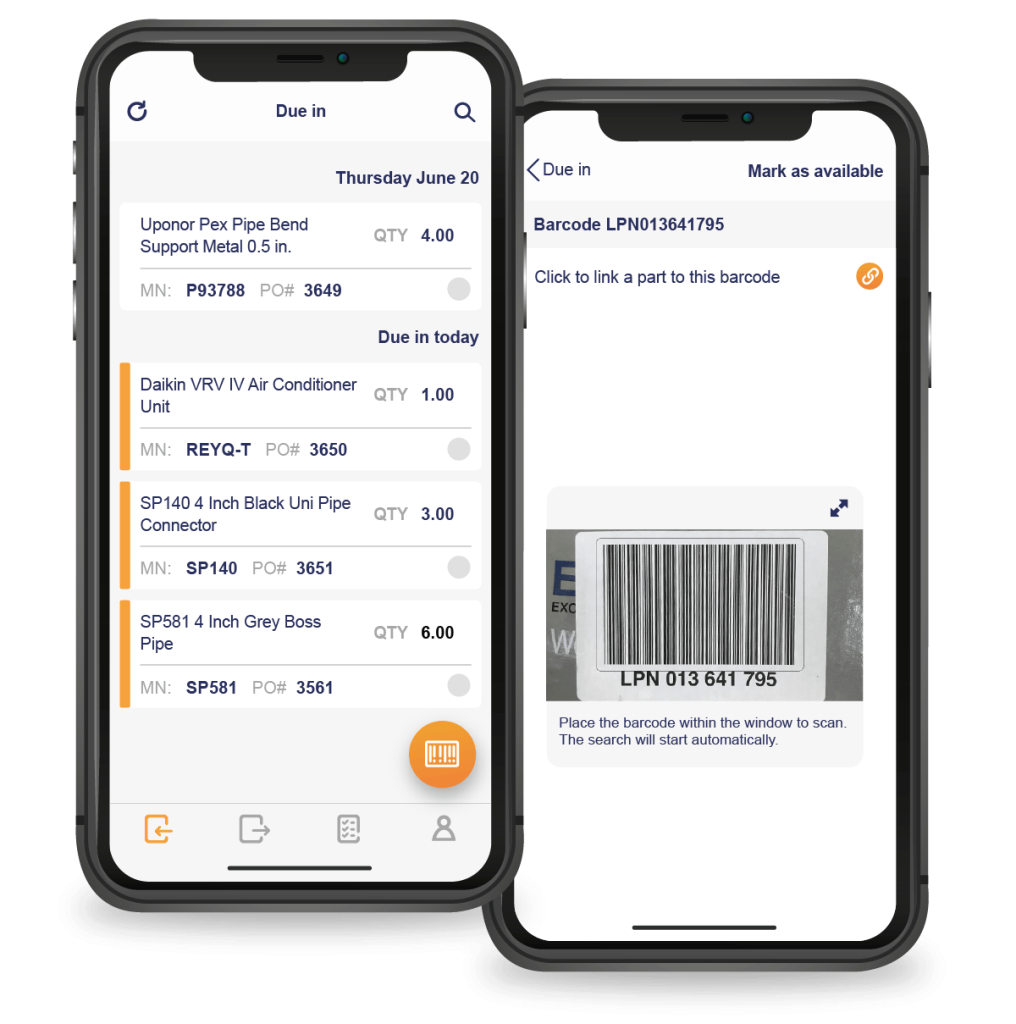There’s a never ending amount of details you need to keep track of when running a company. But HVAC inventory management will always be one of the primary concerns for HVAC business owners and warehouse managers.
After all, stock impacts all corners of the business and daily operations.
Whether you want to optimize vendor relationships, streamline your parts check-in process, or organize and upgrade your warehouse for commercial contracting, here are nine tips and tricks to help you get the most from your inventory!

What is Inventory Management?
Inventory management is the practice of ordering, organizing, and efficiently deploying a business’s stock. For HVAC businesses, common parts generally include HVAC and furnace units, motors, air filters, ignitors, thermostats, and more.
With so many parts to oversee, manual tracking can be inefficient and time-consuming. That’s why many HVAC teams rely on field service inventory management software to handle their stock.
A streamlined inventory management system ensures all company stock, whether it’s in the company warehouse or technician trucks, is accounted for.
Further, organized HVAC parts management makes it easier to calculate and reduce costs against a business and guarantees that frequently used parts are always available. This leads to unforgettable customer experiences and company cash flow.
The Importance of Effective Inventory Management
Optimized Operations
Your inventory has a tremendous impact on daily business operations!
Your team’s productivity will skyrocket when you have good working relationships with your suppliers, guarantee the correct parts are picked up by the right technicians, and optimize inventory pricing to positively impact your revenue.
These benefits are just the tip of the iceberg. Learn more about the parts inventory management playbook here!
Improved Planning
Analyzing stock can help your business identify popular industry and seasonal trends, such as a shift towards using more environmentally friendly appliances, or increasing your supply of AC coolant in the summer and furnace blower belts in the winter.
Thinking towards the future ensures your team can avoid easily preventable mishaps and be prepared to manage challenges when they come up.
Cost Control
One of the largest influences inventory has is over costs and revenue. Fundamentally, until they’re used or installed at the job site, all parts are costs against your HVAC business.
Therefore, your warehouse manager must identify specific tools that are over and understocked and create an ordering system that maintains company margins. Without a reliable system in place, your operations and revenue will suffer.
Read More: Parts Inventory Management Best Practices For Field Service Companies
Customer Satisfaction
Arriving at jobs with the right parts on hand will always impress customers. After all, who doesn’t appreciate when their technician is prepared?
When an unexpected part is needed, the best HVAC inventory management platforms empower techs to request or order parts from the job site. This level of care puts customers at ease. Further, the parts will arrive quicker, meaning services can be completed sooner.
Key HVAC Inventory Management Best Practices
1. Conduct Routine Inventory Audits
As you know, being aware of what’s in stock at all times is important.
An inventory audit is the process of verifying your inventory counts and financial accounts match. At a minimum, you should perform an inventory audit once a year; but many companies opt for twice a year, or every quarter. It’s up to you.
This process will help you discover instances of shrinkage and under or overstocked items, so you can evaluate your entire stock process. You will need to count and tally your physical parts one by one, but hosting your records in an inventory platform makes it easier to look up and reference specific parts.
Even more, great HVAC inventory management software will allow you to easily make stock corrections.
Optimizing asset maintenance and reducing inventory waste, whether because of lost parts or mistakes at the job site, is essential as it’s a matter of discipline and attention to detail, can help eliminate these threats.
2. Organize Inventory by Categories

The ability to add and customize stock into different categories and sub-categories streamlines stock management.
Assigning parts to designated umbrellas makes it easy for team members to search for specific parts within your inventory.
Even more, top-notch inventory management platforms allow users to upload images; visual aids can greatly help employees find what they’re looking for.
3. Analyze Historical Data and Market Trends
With real-time information in your customer database, HVAC inventory software can help your team produce reports on your stock purchasing habits. With these reports, business owners and decision-makers can spot usage trends and build forecasts for how your stock will be used.
Studying trends can also improve customer satisfaction. Accurate inventory overviews and a streamlined parts pickup process ensure technicians have the right parts in their trucks.
This will translate to jobs being completed more quickly, eliminating stress about inventory delays that might result in pushing appointments back.
4. Utilize a Centralized Inventory Management System
Consolidating inventory management into one platform eliminates repetitive and error-prone tasks and aids your team in smoothing out troublesome processes.
HVAC software automation aims to eliminate repetitive and error-prone tasks, aiding your team in smoothing out any troublesome processes. Further, automated processes, such as pre-set parts ordering, leave your team with more time to focus on running the business and pushing forward.
Additionally, your HVAC inventory platform should have access levels, meaning only certain users with security privileges can make specified changes. This ensures that you can trace any edits back to their authors and protects from the possibility of employees taking parts out and writing them off in the system, then selling them for their own profit.
With stock details in one place, you’ll always have all the necessary information when you need it most.
5. Cultivate Strong Relationships With Reliable Suppliers
Ordering and reordering parts is a crucial aspect, not only of inventory management, but of everyday activities. After all, your team can’t perform a majority of your services without parts in stock. As such, suppliers have an enormous impact on your business. With so much at stake, it’s invaluable to effectively manage your relationships.

A devoted vendor management software can help admins efficiently organize each supplier you buy from, access purchase orders and invoices, track correspondence, and more.
Organized and up-to-date records will make your team an easy client to work with. And, if there are any concerns about pricing, your admins can easily access the records in question. Ultimately, streamlined vendor relations are a keystone of inventory management.
6. Set up Automated Reordering Systems and Workflows
An extension of your vendor relationships, understanding when, and when not to, reorder is important. If you make too many orders too soon, you’ll end up with overstock and not enough enough cash to pay for everything. Order too few too late, and your technicians won’t have the parts they need to complete jobs.
This is where automated reordering workflows come into play.
An HVAC software with a dedicated inventory management feature, like Commusoft, should make purchase orders a breeze. With the ability to create specialized reordering parameters, your inventory manager simply sets the minimum number of parts in stock to trigger an automatic order.
For example, the software can review your supplies every day at 4 PM. If there are any categories with fewer than three items, the system will send purchase orders to your preferred vendor. This workflow ensures you never run out of the parts you need, and guarantees you’re not wasting valuable space in your warehouse on parts you don’t need yet.
7. Implement Standardized Procedures
You should never create an inventory management process that depends on everything going according to plan.
Some businesses might opt to utilize a small-scale inventory software that scans incoming parts and then produces an HVAC inventory spreadsheet that an assigned admin. Next, this team member has to edit every single time a part is moved around.
This workflow, of course, is dependent on techs updating each time a part is removed from the warehouse, stored in their van, and then installed on-site.
An all-in-one job management software, designed with the HVAC industry in mind, will allow your team to create fool-proof protocols. Take the last example, where technicians don’t report the parts they use.
In this episode of Tools of the Trade, Rachel breaks down this scenario and explains the processes you can put in place to avoid it from happening altogether. Watch it below!
Plus, check out these 15 HVAC marketing ideas and boost your business!
Here’s a tip. The HVAC inventory management software you choose should come with the ability to prompt technicians to specify which, if any, parts they used before completing the work order.
It seems simple, but implementing a standard workflow like this this makes it easier for warehouse managers to track parts, and for admins to bill customers accurately.
8. Use a Barcode Scanning Platform

A barcode scanner available on your team’s mobile devices is an often overlooked inventory management feature.
This feature can streamline your warehouse manager’s parts check-in process; they can use their phone instead of carrying a laptop and a clunky barcode scanner around the warehouse.
A mobile barcode scanning app enables warehouse managers to create picking lists for each technician, ensuring parts are ready for each appointment.
An all-in-one field service inventory management system ensures real-time parts information is automatically made available to your warehouse, office staff, and technicians. Everyone is kept in the loop, with no additional effort!
9. Establish Key Performance Indicators (KPIs)
Measuring success is essential for understanding the impact of any change you make to your stock control workflows. As such, reports aren’t just useful for spotting trends, but also for identifying key performance indicators.
Common inventory management KPIs include:
- Reduced shrinkage
- Optimized parts margins
- Improved overlap in stock and financial reports
- Improved accuracy in tracking parts from arrival to installation
To determine more KPIs, consult your warehouse manager, field crews, office staff, and business decision-makers on what they consider most important and what would be an achievable goal.
The responses should vary, leaving you with a variety of goals to set for each team. If you’re struggling with establishing “achievable” KPIs, remember this: the right KPI is somewhere in the middle: challenging but realistic.
6 Questions to Ask When Choosing an HVAC CRM
Using Technology to Aid in HVAC Inventory Management
From the examples and use cases outlined above, you now understand many of the impacts HVAC inventory management software can have on your business.
As your team, services, territory, and margins change each year, your inventory software should offer enough customization and reporting to accommodate your company’s growth. Whether your business is big or small, a flexible solution is important.
We understand that change is difficult. But when your technology or manual processes prove unreliable, it’s time to move to a new software provider. You shouldn’t continue to use outdated solutions just for old times’ sake and nostalgia. And especially, don’t just stick to it because “it’s too difficult to train people again”.
Chances are, allocating time for software training that actually works for your business will be more profitable than having them use one that isn’t up to par. Ultimately, clunky software is a huge time and money drain on HVAC companies.
When searching for, and implementing a new solution, designating your warehouse manager to oversee migrating and updating inventory details into the new platform can streamline the process.
Make sure you choose or hire the right person; they should be good with technology. No matter how good an HVAC inventory management software is, you still need a detail-oriented professional to handle it.
This team member has to understand the impact stock has on an HVAC company, be responsible for handling all the unpredictable challenges of inventory, and make the most out of the software’s automation features.
Start Improving Your HVAC Inventory Management Today!
From organizing and auditing your HVAC equipment, improving the customer journey, expanding the scope of your business – effective stock management can transform your HVAC business!
Ready to take your HVAC business to the next level? Commusoft’s field service inventory management software can do everything we’ve discussed in this blog, and so much more!

Emma Bozenda
When I'm not writing about the best digital solutions for trades businesses, I'm either playing with my three dogs, or baking sweet treats!









